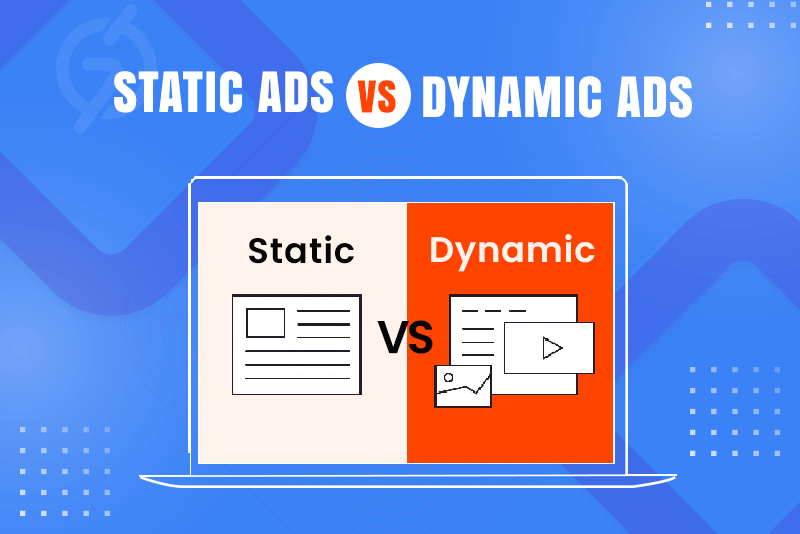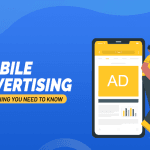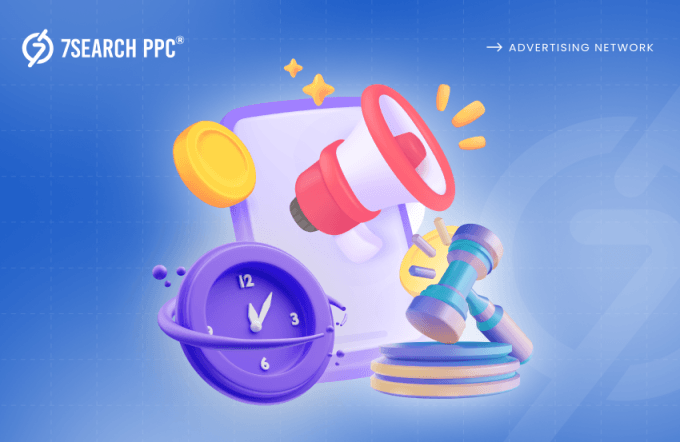Digital banner ads are an essential part of any marketing strategy. However, with numerous design options, types, and placements available, selecting the right format can be confusing. One key question to consider is whether to use static ads or dynamic ads. Just like choosing the perfect outfit for an occasion, there is a right time and place for each type of ad.
Static ads offer broad reach and brand awareness, while dynamic ads provide an amazing personalized experience that boosts engagement and conversion rates.
Research indicates that personalized ad experiences can boost conversion rates by up to 500%, which is a significant increase. However, this requires some technical understanding and comes with a lot of responsibility.
So, how do you determine the most suitable ad format for your ad campaign? Don’t worry; this blog will compare static and dynamic ads to assist you in making an informed decision.
Static Ads: The Simpler Side of Ads
Not all ads are flashy; some prioritize clarity and message efficiency. Yes, we are talking about static ads, which maintain a consistent appearance throughout their display period. They are used by advertisers to create brand awareness and connect with a large audience.
These ads can be in the form of images, videos, or simple animations, but what makes them static is that everyone sees the same content. This simplicity makes them easy to create and compatible with most ad platforms.
Advertisers have full control over the content, allowing them to convey their brand’s message effectively. While these ads can’t be personalized for each viewer, they can be updated or changed by the advertiser as needed, making them a versatile tool for building brand recognition and delivering clear messages.
Simple Yet Powerful: The Pros Of Static Ads
Static advertisements, despite their simplicity compared to more dynamic forms of advertising, offer several distinct advantages:
- Easier and Faster Setup- These ads are all about conveying a message in a single image or creative. This makes them much easier and faster to produce compared to dynamic ads that require data feeds and a more technical setup.
- Complete Control- You are free to design the ad exactly as you envision it, showcasing your brand identity and messaging in a way that aligns with your ad goals. This enables creative testing and refining of your message for maximum impact.
- Broader Audience Reach- Static ads are created to appeal to a broad audience, as they are not tailored to individual browsing history. This means they have the potential to attract the attention of a larger group of people who may be interested in your offering.
- Budget-friendly Ad Solution- The simpler setup and execution of static ads often translate to lower costs. This can be a major benefit for businesses with low marketing budgets or those who are just starting out with digital advertising.
- Enhance Brand Presence- Static ads are an effective way to generate brand awareness and communicate your brand’s narrative. Eye-catching visuals and concise messaging can grab attention and make a lasting impact on ideal customers.
Drawbacks of Static Ads
While simple to set up and manage, these ads come with some drawbacks compared to more dynamic ad formats. Here are some of the cons that we have researched for you.
- Limited Engagement- Static ads are one-way communication channels. Users can not interact with them, click on different parts of the ad for more information, or receive personalized offers. This can make them less engaging and memorable compared to interactive display ads.
- Lower Conversion Rates- Due to their limited engagement and personalization, static ads might not be as effective in generating conversions like sales or sign-ups
- Limited Creativity- Static ads are often limited in size and format, which can make it challenging to differentiate and effectively showcase your product or service.
How To Utilize Static Ads?
You may encounter static ads on webpages (such as banner ads, display ads, pop-up ads, etc.), search engine results pages (including organic and PPC ads), and social media platforms like,
- Sponsored posts on Twitter
These ads typically feature images, videos, or animations that remain consistent for all viewers. This uniformity is highly beneficial for major events like holiday sales or new product launches, where delivering the same message to everyone is very useful. To make effective use of static ads, it’s important to focus on using clear and captivating visuals that can quickly convey the message or offer.
Utilizing eye-catching images and concise text can grab attention and encourage clicks to your app or landing page. Additionally, static content such as eBooks or whitepapers can complement these ads by providing detailed information to interested users, thereby boosting engagement and conversions.
Integrating static ads across various platforms, including social media and websites, ensures that your promotional campaigns have a wider reach and greater visibility.
Dynamic Ads: Advertisements That Adapt to You
Dynamic ads are versatile and adaptable in the advertising world. They adjust their content based on information about the viewer, such as their browsing history or demographics. This allows them to target specific users with relevant products, discounts, or promotions.
Still not getting the point? Ok, let’s take an example that can help you understand dynamic ads better. Suppose you browsed for a pair of sneakers on a sports website. Later, you see an ad for that exact sneaker, possibly even with a discount code.
That’s the magic of dynamic ads! They are frequently used to remind users of products that they have shown interest in, making them a wise strategy for retargeting campaigns. In contrast to static ads, dynamic advertisements are all about showing the right ad to the right person at the right time.
Why Go with Dynamic? Top Benefits of Dynamic Ads
Dynamic ads provide various advantages for advertisers seeking to maximize their campaign effectiveness and engagement. Some of them are given below:

Increased Relevancy and Engagement
Dynamic ads customize the content of each ad to fit the user’s browsing history, location, and demographics. This ensures that users see ads that align with their preferences, which can lead to higher engagement and click-through rates.
Improved Conversion Rates
Dynamic ads can significantly improve conversion rates by showing users ads for products they are more likely to be interested in. This translates to more leads, more sales, and a better return on investment (ROI) for your advertising spend.
Scalability for Large Inventories
If you have a large product inventory, dynamic ads are perfect for managing your ad campaigns. You can smoothly display a wide range of products using product feeds without having to create individual ads for each one.
Enhanced User Experience
Dynamic ads can significantly improve user experience. For example, if you’re on a sports equipment website, static ads might show general athletic apparel. However, dynamic ads can customize the content based on your recent searches. If you were previously looking at soccer cleats, dynamic ads would display those specific cleats.
This personalized approach makes the ad experience more relevant and less disruptive to your browsing. By seeing products you’re interested in, you’re more likely to find the ad helpful, which improves your overall satisfaction with the website.
Real-Time Updates
One of the major benefits of dynamic ads is their ability to update in real-time. This means that the content of the ad can be adjusted based on factors like current weather or inventory levels. This ensures that audiences see the most relevant ads possible at the exact moment they are most likely to be interested. These ads are especially valuable for e-commerce businesses, where product availability and pricing may change frequently.
The Cons Of Dynamic Ads: The Hidden Pitfalls
Dynamic ads provide personalized ad content tailored to individual users, but they come with several potential drawbacks. Let’s explore them together:
Less Control
When using algorithmic ad placements, you lose some control over the content that appears in the ad. The content is determined algorithmically based on user data and your website content. While this approach can help you reach a wider audience, it can also result in irrelevant or poorly phrased ads.
Setup and Maintenance
While dynamic ads can help save time in the long run, setting them up properly requires time and effort. You will need to provide clear data feeds and potentially exclude irrelevant searches with negative keywords.
Not ideal for all campaigns
If you require a very specific message or desire precise control over ad content, dynamic ads may not be the most suitable option. They are most effective for expansive ad campaigns aiming to reach a wide audience.
How To Utilize Dynamic Ads?
Dynamic ads are highly effective marketing ads, particularly beneficial for industries like e-commerce that experience frequent changes in inventory and promotions (as we already discussed). They are also effective for reaching broad audiences and for retargeting campaigns.
However, their implementation demands substantial expertise and a robust dataset to achieve meaningful personalization.
This format can dynamically adjust its content based on user behavior or preferences, making it versatile across various platforms such as social media feeds, personalized emails, and native advertising.
Dynamic ads change their content based on what users do or like. For example, they can suggest things based on what you’ve looked at before on a website. They can also adjust ads to fit what you search for. These ads make people more interested and likely to buy because they show things that match what each person likes and wants.
This makes them really useful in digital marketing today, using automation to make ads that work better for each person who sees them.
Static vs. Dynamic Ads: Which One Drives Better Results?
When deciding between static and dynamic ads, the choice depends on your particular business goals and offerings. Static ads, with their simplicity and ease of creation, can be effective for businesses with a smaller product range or straightforward messaging needs. They are quick to produce and can maintain a consistent brand image.
On the other hand, dynamic ads are well-suited for brands offering a wide range of offerings. These ads can automatically tailor content to match user preferences, making them highly engaging and potentially increasing conversion rates. Ultimately, the effectiveness of either type depends on factors such as:
- Target audience,
- Objectives of the ad campaigns
- Budget.
- Ad Networks
Consulting with marketing professionals and analyzing past campaign data can help determine which type of ad will drive better results for your specific business needs.
Conclusion
When deciding between static and dynamic ads, both ads are essential for your programmatic ads campaign. Static ads are easier to create and are great for brand awareness or promoting new products, especially if you have a limited product range. On the other hand, dynamic ads personalize content based on user behavior, making them more engaging and potentially leading to higher conversion rates.
These are ideal for businesses with a wide product range or for retargeting campaigns. To decide which ad format is best for you, think about your target audience, campaign goals, and budget. It can also be helpful to consult a marketing professional.
Frequently Asked Questions (FAQs)
What are static ads?
Ans. These ads are known for their simple but attractive nature you see online. They show the same image or message to everyone who sees them. They’re easy to create and good for brand awareness.
What are dynamic ads?
Ans. Dynamic ads behave like online salespersons, adapting messages based on users’ interests to display relevant products.
Which ad is better, static or dynamic?
Ans. It depends! Static ads are effective for spreading brand awareness or delivering a simple message, while dynamic ads are more suitable for showcasing personalized offers or a wide range of products.
How can I decide which type of ad is right for me?
Ans. When deciding between static and dynamic ads, consider your target audience, ad campaign goals, ad networks, and budget.
Can I use both static and dynamic ads in my campaign?
Ans. Yes, you can utilize both static and dynamic ads in your ad campaign. This can be a good way to reach a broad audience and target specific viewers.



















